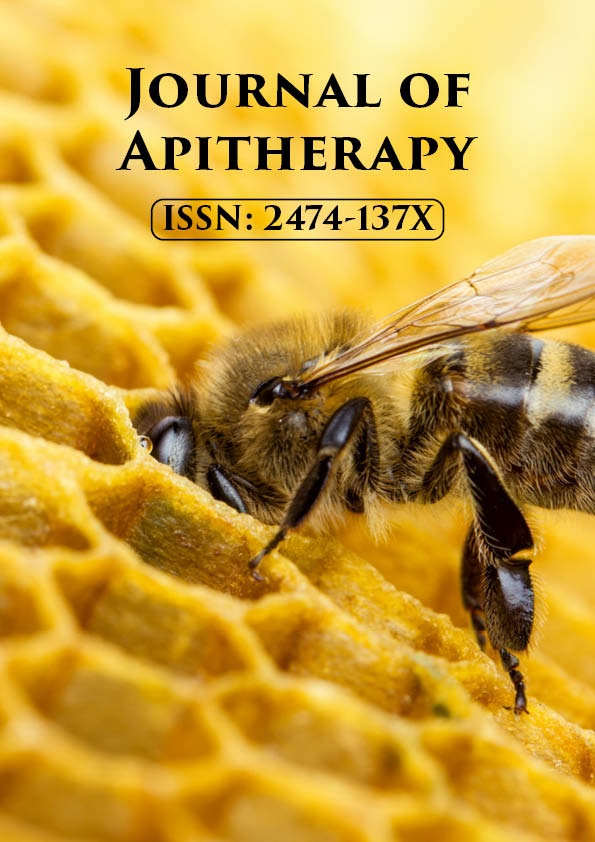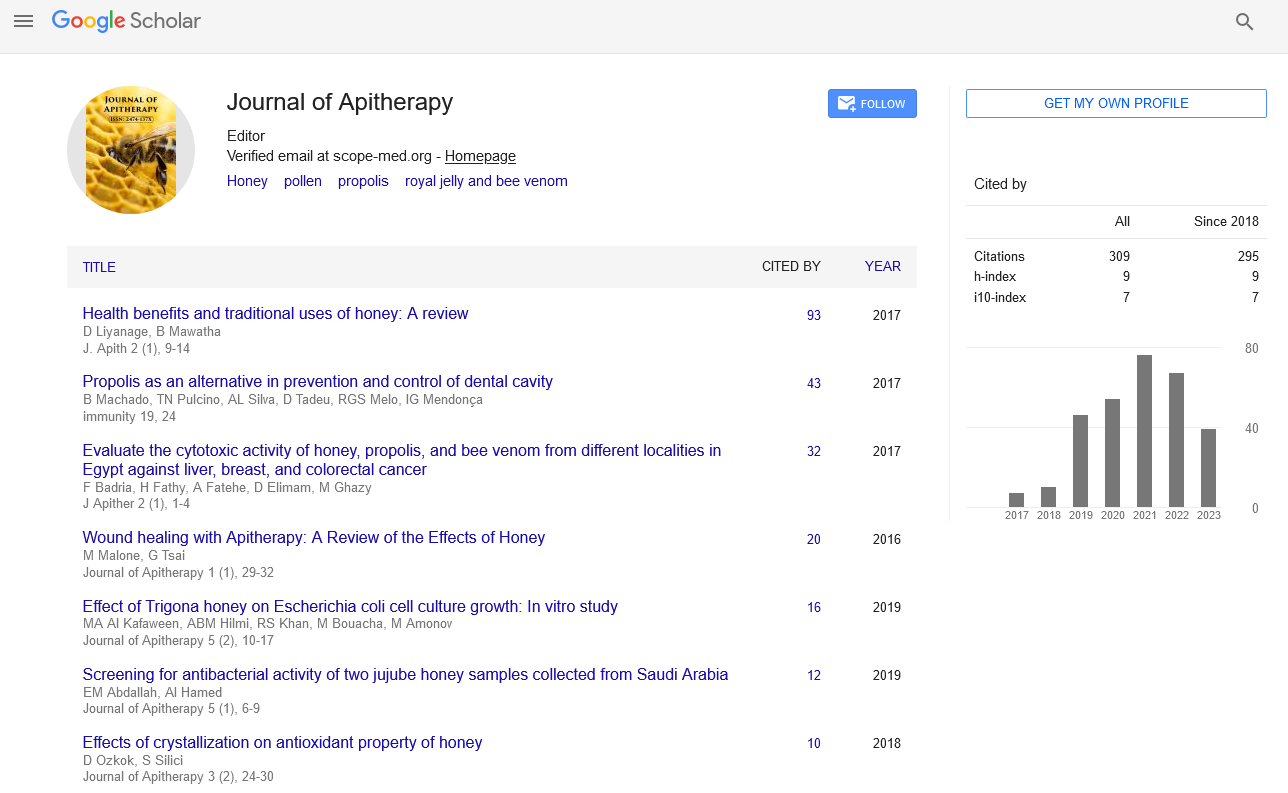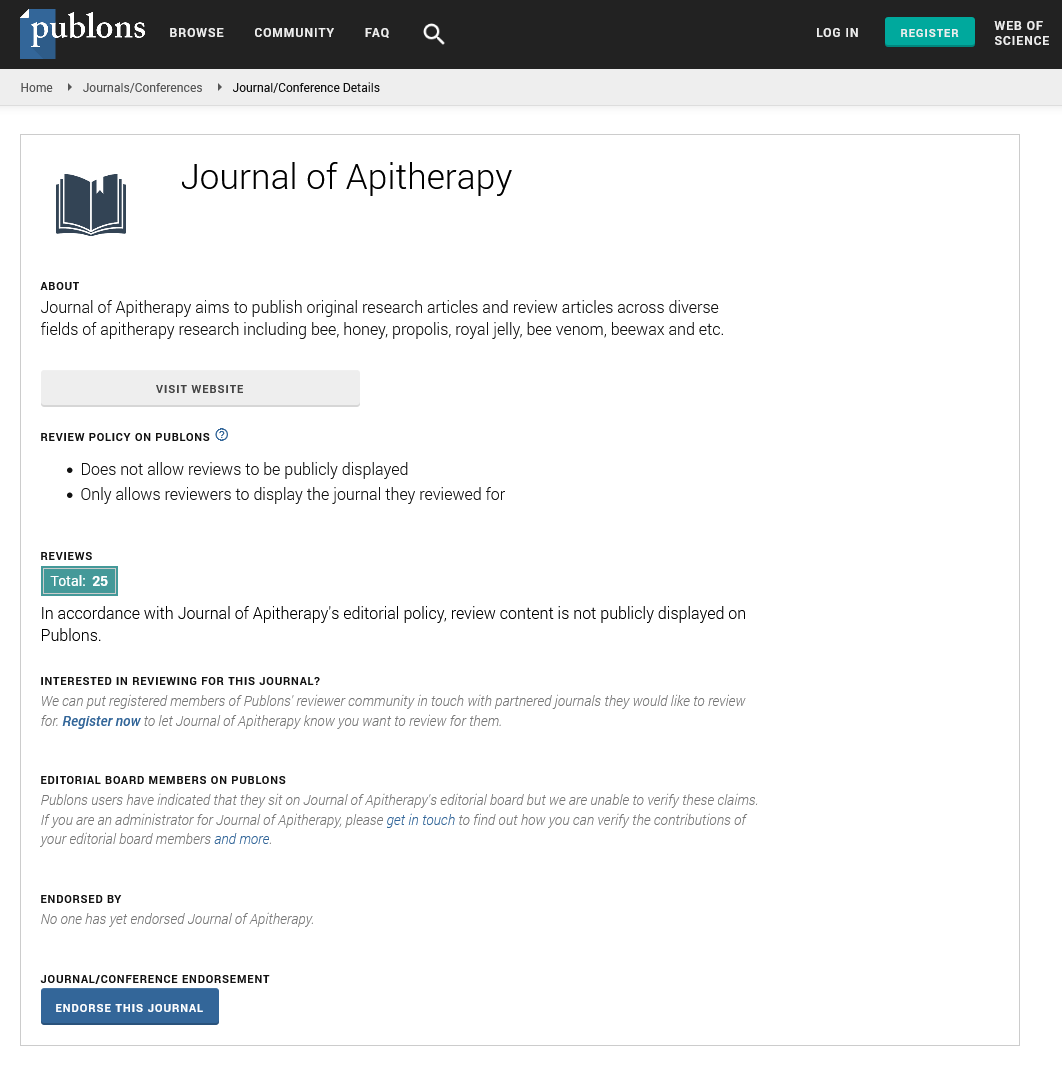Commentary - Journal of Apitherapy (2022)
Commentary on Use of Honey in Different Field
Amor Khachemoune*Amor Khachemoune, Department of Medical Sciences, Neyshabur University of Medical Sciences, Neyshabur, Iran, Email: amoekh@gmail.com
Received: 01-Feb-2022, Manuscript No. JAPITHERPAY-22-54609; Editor assigned: 03-Feb-2022, Pre QC No. JAPITHERPAY-22-54609 (PQ);; Reviewed: 18-Feb-2022, QC No. JAPITHERPAY-22-54609;; Revised: 23-Feb-2022, Manuscript No. JAPITHERPAY-22-54609 (R).; Published: 02-Mar-2022
Description
Unhealed wounds, ulcers and burns have a significant impact on both public health and the economy. Many therapies are being used to help accomplish considerable wound healing and infection elimination, including novel drugs and technologies. Finding an intervention that has a therapeutic effect on the healing process as well as the potential to kill microorganisms is therefore quite valuable. Honey is a natural product that has only recently made its way into modern medicine. The antimicrobial properties of honey, as well as its benefits on wound healing, have been carefully researched. Honey has been found to be an effective broad-spectrum antibacterial agent in laboratory investigations and clinical trials. This research examines the evidence for natural honey’s efficacy in wound healing and its capacity to sterilize infected wounds. Honey has been shown to reduce prostaglandin levels while increasing nitric oxide end products. These qualities could explain some of honey’s biological and medicinal properties, such as its antibacterial and wound-healing abilities. The findings show that honeys from various geographical regions have significant therapeutic effects on chronic wounds, ulcers and burns. Indeed, honey’s medicinal value has been documented in the world’s earliest medical literatures, and it has been known to have antibacterial and wound-healing properties since ancient times. Most honeys have antibacterial properties due to the enzymatic generation of hydrogen peroxide. Non-peroxide honey on the other hand, has considerable antibacterial properties even when hydrogen peroxide activity is stopped. Its mechanism could be linked to honey’s low pH level. in vitro bactericidal activity of medical grade honeys against antibiotic-resistant bacteria that cause a variety of life-threatening illnesses in humans. However, because of the spatial and temporal variety in nectar sources, some natural honeys have a wide range of antibacterial action. The biological potentials of honey, propolis and royal jelly were discussed in detail. Honey’s potential health advantages are discussed, including microbial suppression, wound healing and implications on other disorders. Propolis has been shown to provide a variety of health benefits, including relief from gastrointestinal difficulties, allergies and gynaecological, dental, and dermatological issues. Royal jelly is well-known for its anti-aging, anti-reproductive, anti-neurodegenerative, anti-wound-healing, and anti-aging properties. Honey is a supersaturated solution made by bees that is mostly made up of fructose and glucose, but also contains proteins, amino acids, vitamins, enzymes, minerals, and other minor components. Honey skin usage may be traced back to the dawn of civilization, demonstrating that honey has long been used as a binder or carrier, as well as for its therapeutic properties. Honey is an excellent wound and burn dressing, and it has also been used in the treatment of pityriasis, tinea, seborrhea, dandruff, diaper dermatitis, psoriasis, haemorrhoids, and anal fissure. It has emollient, humectant, calming, and hair conditioning properties in cosmetic compositions, keeps the skin young and prevents wrinkle formation, regulates pH, and prevents pathogen infections. Lip ointments, cleaning milks, moisturizing creams, after sun, tonic lotions, shampoos, and conditioners are all honey-based cosmetics. Inflammation plays a critical role in the development of chronic diseases such as cancer, cardiovascular disease, diabetes, arthritis, and neurological diseases, all of which pose a significant treatment challenge. There is a growing interest in the quest for natural functional foods with therapeutic and preventative activities, owing to overwhelming evidence of the significance of nutritional regulation in preventing inflammation-related disorders.
Copyright: © 2022 The Authors. This is an open access article under the terms of the Creative Commons Attribution NonCommercial ShareAlike 4.0 (https://creativecommons.org/licenses/by-nc-sa/4.0/). This is an open access article distributed under the terms of the Creative Commons Attribution License, which permits unrestricted use, distribution, and reproduction in any medium, provided the original work is properly cited.







